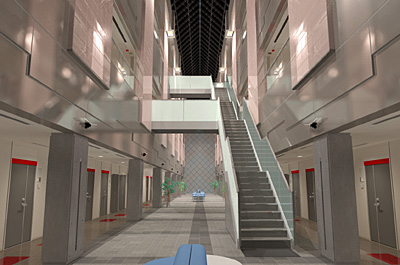
The main goal of this project is to produce synthetic images perceptually indistinguishable from the real scene using known computer graphics techniques, data collected in the field and accurate parameters. We realize that this is pretentious and impossible at present, but we feel that graphics community is closer and closer to this goal. and we would like here to propose and validate our somewhat rigorous approach to the problem.
A second objective is to donate the complete scene including model, lights goniometric diagrams, textures and surfaces BRDF measurements to people involved in illumination and rendering methods research. Using this "Open Source" approach we want to encourage people to use our scene as base for comparison . We hope to create a groundwork for further research and generate a discussion about the qualities and drawbacks of the method we employed.
A third objective is to investigate the impact of using BRDF (Bidirectional Reflectance Diffusion Function) in architectural scenes.
We choose the Atrium at the University of Aizu for its challenging lighting model, the richness and diversity of the materials employed for the construction and the geometric purity of its architectural structure. At every stage of creation we tried to respect the best accuracy in measurements and construction achievable by our means.
The following pages present the step by step progression of the project from modeling to rendering: